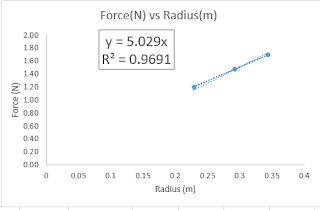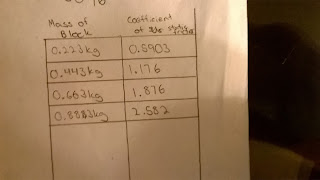Alejandro Rodriguez
April 19, 2017
Introduction
In this lab we want to see if the impulse momentum theorem can be observed. We want to test this theorem by doing one experiment in a elastic collision and inelastic collision. In the elastic collision, we do this by attaching a spring on the system and when the cart collides ( due to us providing a small force to move it) it will hit the spring and bounce back. We do the inelastic collision by having clay attached to the end of the system so when the cart collides it sticks to the clay.
We first set up the apparatus so that on one end of the track had the motion sensor and at another end of the track we set up cart with spring attach to its end so when the cart we push hits that spring it would bounce back for an elastic collision. As always we calibrate and set up the motion and force sensors. We put the force sensor on the cart. We put the cart on the track and we start the experiment. We want to see if the velocity vs time graph and the force vs time graph would produce the same results.
We first set up the apparatus so that on one end of the track had the motion sensor and at another end of the track we set up cart with spring attach to its end so when the cart we push hits that spring it would bounce back for an elastic collision. As always we calibrate and set up the motion and force sensors. We put the force sensor on the cart. We put the cart on the track and we start the experiment. We want to see if the velocity vs time graph and the force vs time graph would produce the same results.
When we try calculating impulse using the Velocity vs, Time graph and taking the integral of the Force vs, Time graph, you can see that we got two different results. I want to believe the some of the force exerted by the spring on the cart was lost when it had happen.
In this next part of this lab, we did the same thing except, instead of the spring, we had clay attached to the end so this will model an inelastic collision.
When we compare the result of our calculated impulse value compared to the integral of the Force vs. Time graph, we can see that the impulse-momentum theorem can be applied here as we got relatively similar values in this inelastic collision,
In this ab I learned that we can model both Elastic and Inelastic collision and see how the impulse-momentum theorem can be applied. That we can test this theorem using our knowledge of momentum and impulse. Although when we did our Elastic collision, our calculated value compared to the integral of the Force vs. Time graph were different.














































